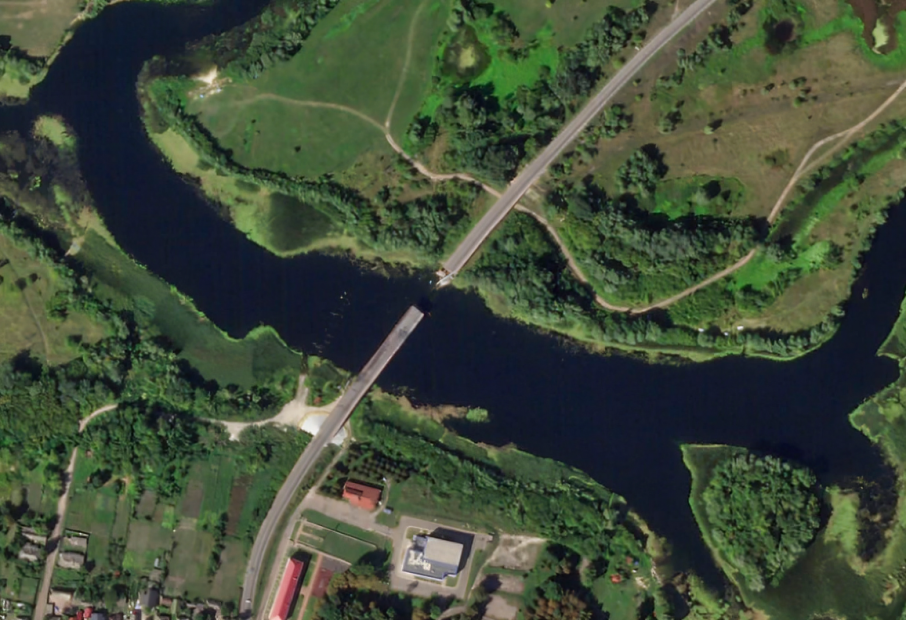- 11:02Former B.C. Premier Christy Clark Expresses Interest in Federal Leadership Amid Trudeau's Challenges
- 10:50Morocco and Denmark Unite to Bolster Human Rights in Justice System
- 10:35Tragedy Strikes Indiana: Shooting at High School Party Leaves One Dead and Ten Injured
- 10:20Morocco's Atlantic Vision: A Bridge Between Continents Unveiled in Quebec
- 10:15Algerian Dissident Hichem Aboud Found in Critical Condition: A Disturbing Tale of Kidnapping and Torture in Spain
- 09:50Algerian Dissident Journalist Vanishes in Spain, Raising Alarm Bells
- 09:20Moroccan Football Star Hakim Ziyech's Rumored Wedding Sparks Fan Frenzy
- 09:09Tragic Assassination of Indigenous Priest Marcelo Perez Highlights Escalating Violence in Chiapas
- 08:50Morocco Challenges UNHCR's Inaction on Tindouf Camps Crisis
Follow us on Facebook
Ukraine's Intensified Campaign: Satellite Data Exposes Growing Attacks Within Russian Borders
Recent satellite imagery has shed light on Ukraine’s increasingly aggressive military strategy, which now extends into Russian territory. Ukraine's expanded campaign includes targeted strikes on strategic infrastructure, ranging from bridges in the Kursk region to an oil depot and an air base deep within Russia's borders.
Strategic Bridges Targeted

In a remarkable escalation, Ukraine has targeted key bridges across the Seim River in Russia’s Kursk region. The Ukrainian military released footage over the past week purportedly showing the destruction of at least two bridges near Glushkovo. Satellite images corroborate the damage, indicating that Ukrainian forces have effectively isolated Russian troops in this area, potentially impeding their operations.
Initially, Ukraine maintained a low profile regarding its surprise offensive in Kursk, which has shifted the dynamics of the ongoing conflict. However, recent weeks have seen a strategic pivot as Kyiv showcases its operations and the utilization of advanced Western weaponry via social media platforms.
Use of Advanced Western Weaponry Confirmed
Ukraine has publicly acknowledged its use of U.S.-manufactured High Mobility Artillery Rocket Systems (HIMARS) in these operations. A recent video, released by Ukrainian military sources, demonstrates the targeting of pontoon bridges and other temporary structures critical to maintaining Russian supply lines. The geolocation of the video confirms its authenticity, though the exact timing and target—whether pontoon bridges or other engineering assets—remain partially unverified.
Further illustrating Ukraine’s enhanced capabilities, the country’s air force shared footage of guided aerial bombs destroying two bridge crossings in Kursk. This development underscores Kyiv's intention to assert its operational reach and amplify the impact on Russian infrastructure.
Strategic Depot in Flames

Ukraine’s offensive also targeted a diesel depot in Proletarsk, Rostov region, leading to a significant fire that has persisted for several days. Over 500 firefighters have been deployed to manage the blaze, which has spread over 100,000 square feet. Ukrainian officials have claimed responsibility, stating the depot stored crucial supplies for the Russian military. Russian authorities, however, attributed the fire to drone debris affecting various warehouses.
Air Base Attacked

Another notable strike occurred at the Marinovka air base in the Volgograd region. A video geolocated by NBC News depicts extensive smoke and explosions at the facility. Regional officials confirmed a fire at a Defense Ministry site following a drone attack, with reports indicating that Ukrainian forces targeted warehouses holding antitank weapons and fuel. Satellite imagery shows significant damage to the air base, though details remain sparse.
Railway Ferry Struck

In a further development, a railway ferry carrying fuel was attacked in Krasnodar, a southern port near the Crimean Peninsula. The ferry sank as a result of the strike, and local emergency responders have reported one crew member missing and 17 rescued. Ukrainian authorities have not claimed responsibility for this attack, though Russian officials have attributed it to Kyiv.
International Reactions and Washington's Stance
The escalation of these attacks appears to have caught both Moscow and Kyiv’s Western allies by surprise. Despite the expanding scope of Ukraine’s operations, the United States has not objected to the use of its weapons in these contexts. Pentagon spokesperson Lt. Col. Charlie Dietz confirmed that U.S. weaponry, including HIMARS, is used within Ukrainian territory, and no evidence suggests their deployment beyond these boundaries.
As Ukraine continues its bold campaign, the conflict's trajectory remains uncertain, with both sides adjusting strategies in response to these high-stakes developments.



